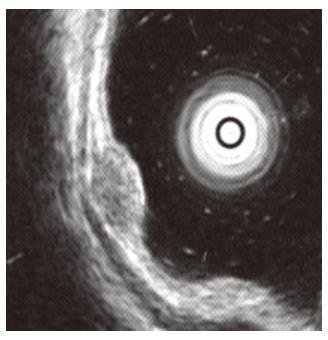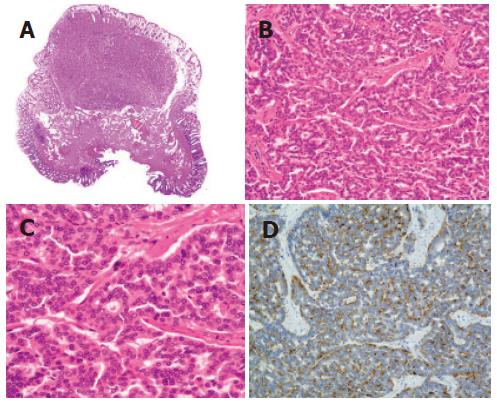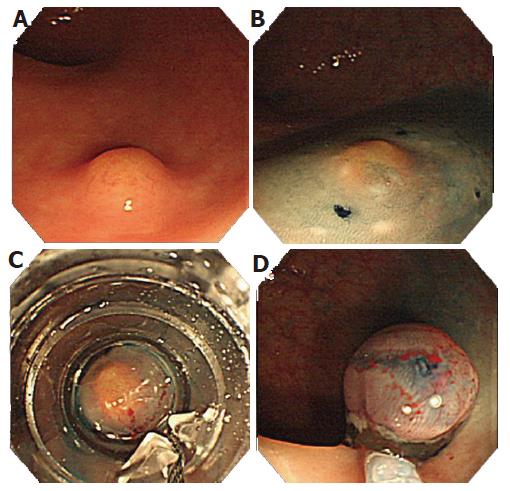Copyright
©2006 Baishideng Publishing Group Co.
World J Gastroenterol. Jul 7, 2006; 12(25): 4026-4028
Published online Jul 7, 2006. doi: 10.3748/wjg.v12.i25.4026
Published online Jul 7, 2006. doi: 10.3748/wjg.v12.i25.4026
Figure 1 Endoscopic ultrasonography demonstrating a hypoechoic solid tumor in the superficial submucosa without involvement of the muscularis propria.
Figure 2 Endoscopic appearance of a carcinoid tumor, 6 mm in diameter, located in the lower portion of the rectum.
A: Yellowish appearance with a smooth surface before treatment; B: injection of submucosal saline solution into the base of the lesion using needle forceps; C: aspiration of a carcinoid tumor into the ligation device; D: snare resection performed below the band by using blend electrosurgical current.
Figure 3 Section of a rectal carcinoid tumor obtained by endoscopic mucosal resection.
A: Low-power photomicrographs demonstrating a carcinoid tumor, which is present in both the mucosa and submucosa of the rectum, with tumor-free surgical margins (HE, original magnification x 4); B and C: tumor cells arranged in nests and rosette-like structures, with absence of nuclear pleomorphism and mitotic figures (HE, original magnification x 200 and x 400, respectively); and D: chromogranin staining of the tumor cells demonstrating prominent chromogranin immunoreactivity (original magnification x 200).
- Citation: Sakata H, Iwakiri R, Ootani A, Tsunada S, Ogata S, Ootani H, Shimoda R, Yamaguchi K, Sakata Y, Amemori S, Mannen K, Mizuguchi M, Fujimoto K. A pilot randomized control study to evaluate endoscopic resection using a ligation device for rectal carcinoid tumors. World J Gastroenterol 2006; 12(25): 4026-4028
- URL: https://www.wjgnet.com/1007-9327/full/v12/i25/4026.htm
- DOI: https://dx.doi.org/10.3748/wjg.v12.i25.4026















